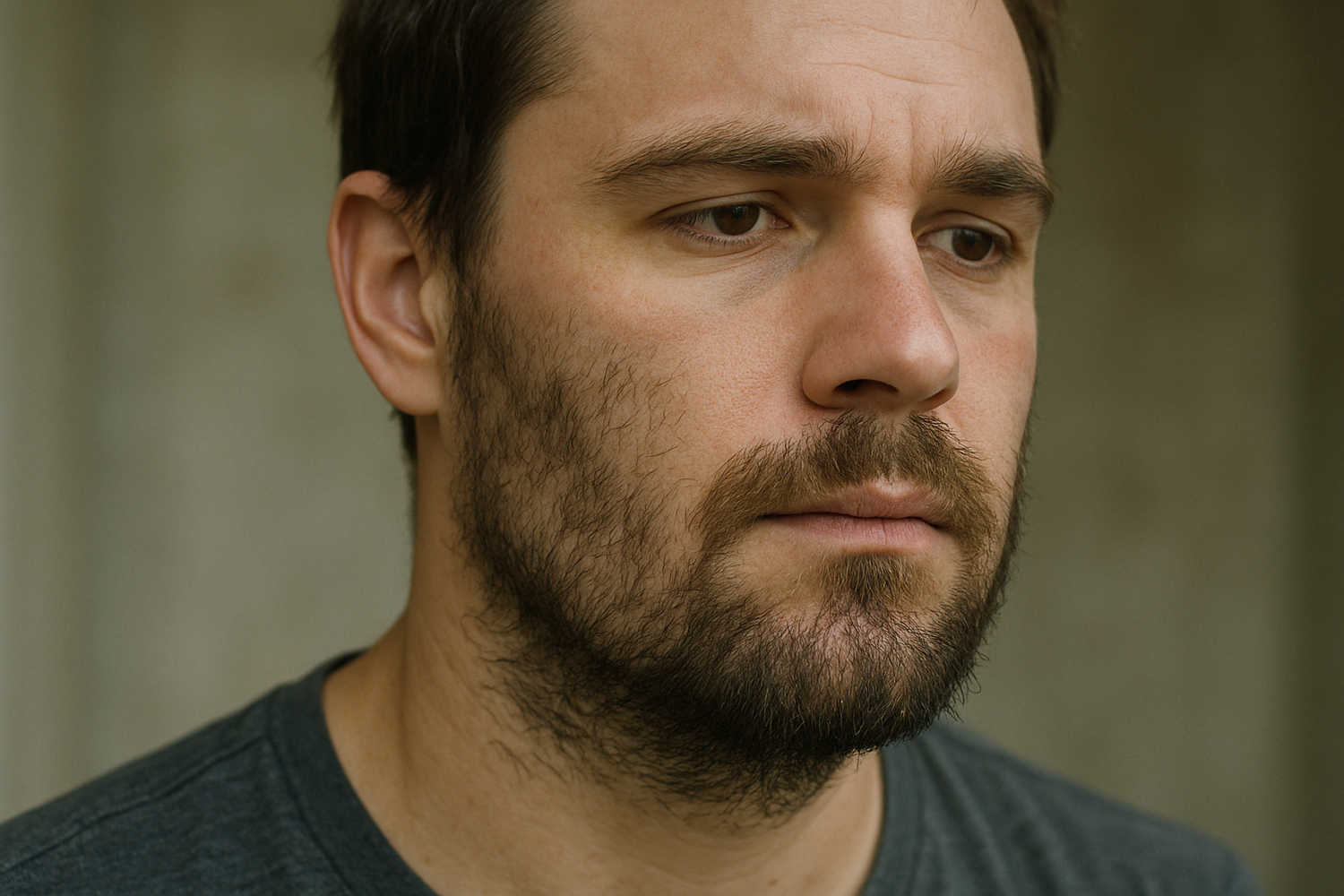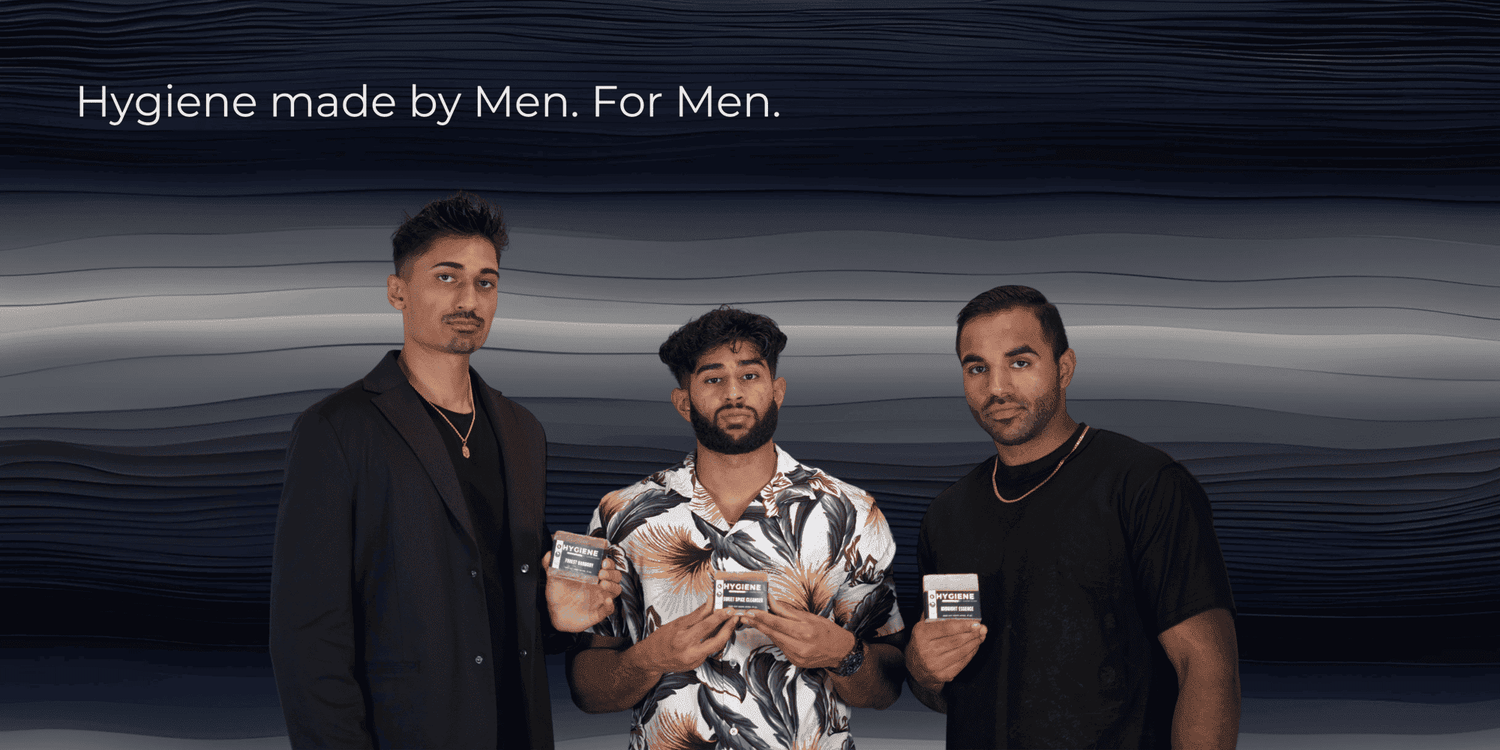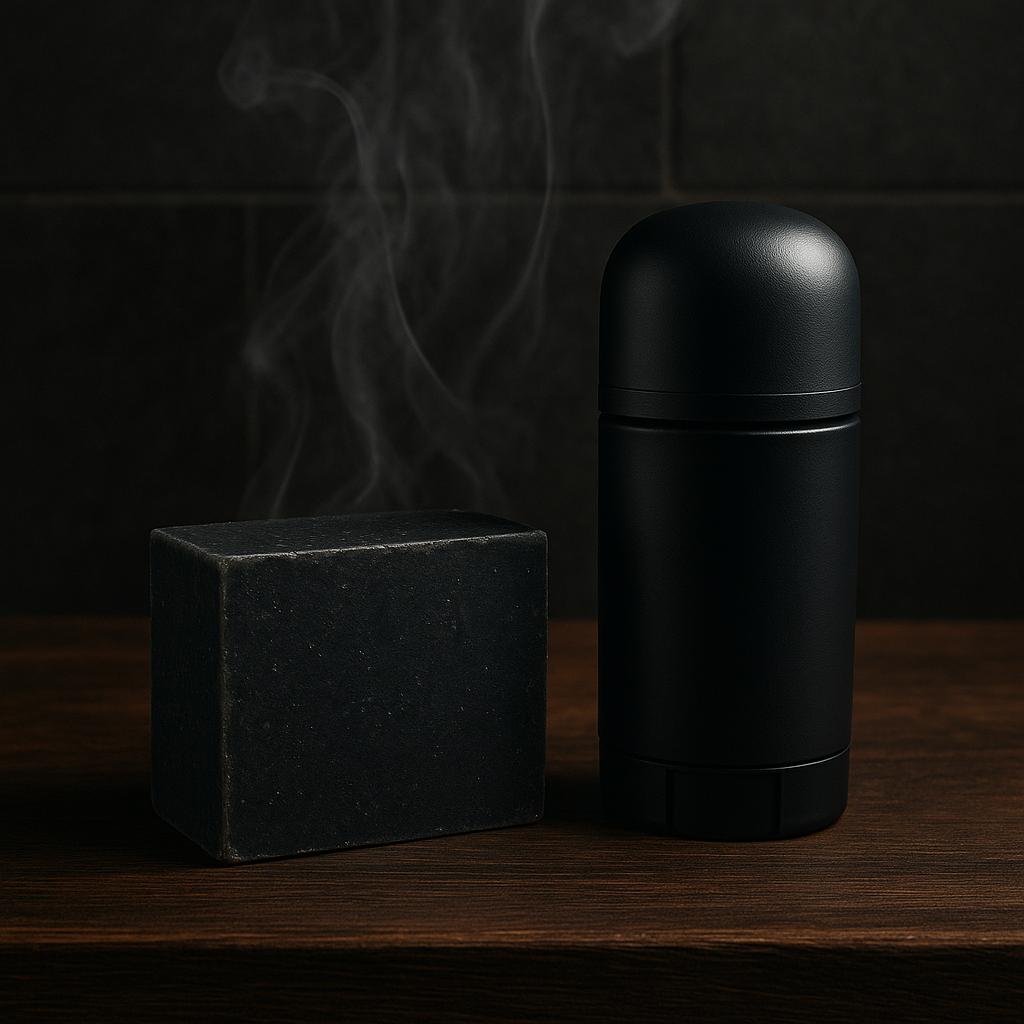Why Does My Beard Grow Uneven?
Have you ever looked in the mirror and wondered why your beard seems to play by its own rules? Uneven beard growth can be frustrating, leaving you puzzled and eager for solutions.
Whether you're a seasoned beard enthusiast or just starting your facial hair journey, understanding the factors behind this common issue can dramatically change your grooming game. From genetics to skin health, several variables contribute to an irregular beard pattern. The good news? With the right insights and techniques, you can nurture a fuller, more uniform beard that reflects your unique style. Join us as we explore the reasons behind uneven beard growth and discover tips to achieve that luscious, well-groomed look you've always wanted.
Understanding Beard Growth Patterns
Beard growth patterns can be as unique as fingerprints, varying significantly from one individual to another. The process of growing a beard involves more than just putting away the razor. It’s important to understand that beard hair doesn’t grow uniformly. Some areas of your face might produce thick, robust hair, while others might struggle to produce more than a few wispy strands. This uneven growth can often lead to frustration, especially when you’re aiming for a consistent, full-bearded look.
A key factor in understanding beard growth patterns is recognizing that hair grows in cycles. These cycles include the anagen (growth), catagen (transition), and telogen (resting) phases. Each hair follicle operates independently, which means that while one follicle might be actively growing a hair, another could be in the resting phase. This asynchronous growth cycle contributes to the patchy appearance many men experience when growing a beard.
Moreover, the density and direction of hair growth can vary across different parts of the face. For instance, the mustache area might grow denser hair compared to the cheeks. Additionally, hair on the chin tends to grow thicker and faster than on the sides of the face. Understanding these natural growth patterns can help set realistic expectations and guide your grooming strategy to achieve the best possible results.
Common Causes of Uneven Beard Growth
Several factors can contribute to uneven beard growth, and identifying these can help you address the issue more effectively. One of the most common causes is genetics. If your father or grandfather had a patchy beard, chances are you might face similar challenges. Genetic predisposition determines the density, color, and growth rate of your facial hair.
Another significant factor is hormonal balance. Testosterone and dihydrotestosterone (DHT) play crucial roles in facial hair development. Variations in the levels of these hormones can lead to uneven growth. For instance, higher levels of testosterone typically promote thicker hair growth, while lower levels might result in sparse and patchy hair.
Skin health also plays a pivotal role in beard growth. Conditions such as acne, eczema, or fungal infections can damage hair follicles and impede hair growth. Additionally, poor skincare routines, such as infrequent washing or using harsh products, can lead to clogged pores and weakened hair follicles, contributing to an uneven beard.
The Role of Genetics in Beard Growth
Genetics is one of the primary determinants of your beard's growth pattern. Your genetic makeup dictates how many hair follicles you have on your face and their distribution. It also influences the thickness and color of your facial hair. If your family has a history of thick, full beards, you’re more likely to develop a similar beard. Conversely, a family history of sparse or patchy beards can mean you might face similar challenges.
Hair follicle sensitivity to hormones like DHT is also genetically determined. DHT is a byproduct of testosterone and is crucial for the development of facial hair. Some men have hair follicles that are more responsive to DHT, resulting in thicker and faster-growing facial hair. Others may have less responsive follicles, leading to slower and thinner hair growth.
While you can’t change your genetic makeup, understanding its impact on your beard growth can help you set realistic expectations and adopt suitable grooming practices. Embracing your unique beard pattern and learning how to manage and enhance it can lead to a more satisfying grooming experience.
Hormonal Influences on Beard Development
Hormones are the driving force behind beard growth, with testosterone and DHT playing pivotal roles. Testosterone is responsible for the development of primary and secondary male characteristics, including facial hair. During puberty, the surge in testosterone levels triggers the growth of facial hair. However, not all testosterone is converted into DHT, which is the more potent hormone directly responsible for beard growth.
The sensitivity of your hair follicles to DHT determines how much facial hair you can grow. Higher sensitivity means your follicles are more likely to produce thicker and denser hair. Hormonal imbalances, such as low testosterone levels, can hinder this process, leading to patchy or uneven beard growth. Conditions like hypogonadism, where the body produces insufficient testosterone, can significantly affect facial hair development.
Lifestyle factors can also influence hormone levels. Stress, poor diet, lack of sleep, and insufficient physical activity can negatively impact testosterone production. Conversely, maintaining a healthy lifestyle, managing stress, eating a balanced diet, and engaging in regular exercise can help optimize hormone levels and promote better beard growth.
Impact of Age on Beard Thickness and Growth
Age is another critical factor influencing beard growth. Most men start to see facial hair development during their teenage years, but it doesn’t always mean they’ll have a full beard immediately. In fact, many men don’t achieve their full beard potential until their mid-20s to early 30s. Patience is key, as beard growth can improve with age.
During the teenage years and early 20s, hormonal levels are still stabilizing, which can result in uneven and patchy beard growth. As you age, your body produces more consistent levels of testosterone and DHT, which can lead to a fuller and more uniform beard. It’s not uncommon for men to notice significant improvements in their beard density and thickness well into their late 20s and 30s.
However, it’s also important to note that beard growth can decline with age. As men reach their 40s and beyond, testosterone levels may begin to decrease, potentially leading to thinning facial hair. While aging is inevitable, adopting healthy grooming practices and lifestyle habits can help maintain your beard’s appearance for as long as possible.
Grooming Techniques for Managing Uneven Growth
Grooming plays a crucial role in managing uneven beard growth. Regular trimming can help create a more uniform appearance by evening out longer and shorter hairs. Using a good quality beard trimmer with adjustable settings allows you to maintain the desired length and shape, giving your beard a well-groomed look.
Brushing and combing your beard daily can also promote even growth. This practice helps distribute natural oils from your skin throughout the beard, keeping it moisturized and healthy. Additionally, brushing can stimulate blood flow to the hair follicles, encouraging better growth. Using a boar bristle brush is particularly effective as it’s gentle on the hair and skin.
Incorporating beard oils and balms into your grooming routine can provide essential nutrients and hydration, promoting healthier and stronger hair growth. These products often contain ingredients like jojoba oil, argan oil, and shea butter, which nourish the hair and skin, reducing dryness and breakage. Regular use can improve the overall texture and appearance of your beard.
Products to Promote Healthy Beard Growth
Several products on the market are designed to promote healthy beard growth and address uneven patches. Beard oils, as mentioned earlier, are excellent for moisturizing and nourishing the hair and skin. Look for products that contain natural ingredients like argan oil, jojoba oil, and vitamin E, which are known for their beneficial properties.
Beard balms are another useful product, offering a thicker consistency than oils. They not only moisturize but also provide a light hold, helping to tame unruly hairs and shape your beard. Balms often contain ingredients like beeswax and shea butter, which provide additional conditioning benefits and help lock in moisture.
For those struggling with significant patchiness, topical treatments containing minoxidil can be an effective solution. Minoxidil is a well-known hair growth stimulant that can help promote the growth of new hair in sparse areas. However, it’s important to consult with a healthcare professional before starting any new treatment to ensure it’s suitable for your specific needs.
Dietary Considerations for a Fuller Beard
A healthy diet is fundamental to promoting strong and healthy beard growth. Nutrient deficiencies can impede hair growth and lead to weak, brittle hairs. Ensuring you consume a balanced diet rich in vitamins and minerals can significantly impact the condition of your facial hair.
Proteins are the building blocks of hair, so it’s essential to include ample protein in your diet. Foods like lean meats, fish, eggs, and legumes are excellent sources of protein. Additionally, vitamins such as B-complex vitamins (B6, B12, and biotin), vitamin A, C, D, and E play crucial roles in hair health. These vitamins can be found in a variety of foods, including leafy greens, nuts, seeds, and fruits.
Minerals like zinc, iron, and magnesium are also vital for hair growth. Zinc helps repair and grow hair tissues, while iron improves blood circulation to the hair follicles. Incorporating foods like spinach, nuts, seeds, and whole grains can help ensure you’re getting these essential nutrients. Staying well-hydrated by drinking plenty of water is equally important, as dehydration can lead to dry and brittle hair.
When to Consult a Dermatologist or Specialist
While many cases of uneven beard growth can be managed with proper grooming and lifestyle changes, there are instances where professional help may be necessary. If you’ve tried various methods to improve your beard growth without success, it might be time to consult a dermatologist or a specialist.
A dermatologist can assess your skin and hair health, identify any underlying conditions, and recommend appropriate treatments. Conditions like alopecia areata, fungal infections, or severe acne can significantly impact beard growth and require medical intervention. A specialist can also provide guidance on the use of treatments like minoxidil or prescription medications if necessary.
It’s also advisable to seek professional help if you experience sudden changes in your beard growth pattern, such as rapid hair loss or the development of bald patches. These changes can be indicative of underlying health issues that need to be addressed promptly. A healthcare professional can perform the necessary tests to diagnose the problem and provide tailored advice and treatment.
Tips for Achieving a Balanced Beard
Achieving a balanced and even beard requires a combination of understanding your unique growth patterns, adopting effective grooming techniques, and maintaining a healthy lifestyle. While genetics play a significant role, there are several steps you can take to enhance and manage your beard growth.
Start by setting realistic expectations and embracing your natural growth pattern. Consistent grooming practices, such as regular trimming, brushing, and the use of quality beard care products, can significantly improve the appearance of your beard. Incorporating a healthy diet rich in essential vitamins and minerals can also promote stronger and healthier hair growth.
If you encounter persistent issues with uneven beard growth, don’t hesitate to seek professional advice. A dermatologist or specialist can provide valuable insights and recommend treatments tailored to your specific needs. With patience, dedication, and the right approach, you can achieve the luscious, well-groomed beard you’ve always wanted.
While an uneven beard can be frustrating, it’s often just a part of the process. With a consistent grooming routine, proper care, and the right products, you can train your beard to grow in more evenly over time. Whether you’re just starting your journey or looking to tame stubborn patches, investing in quality grooming essentials makes all the difference. Try our Premium Beard Oil to nourish your beard, soften rough areas, and promote healthier, fuller growth starting today.








